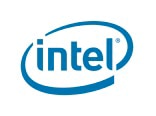May 16, 2018
The Time for Digital Transformation Is Now — Here’s How to Get Started
For many organizations, the biggest hurdle to IoT innovation is not knowing where to begin.

There’s an old maxim in business that you can’t manage what you can’t measure. Digital transformation and the Internet of Things (IoT) offer immense promise to improve our ability to measure a variety of factors in everything we do. With this comes a greater ability to manage operations, which can spark innovation and unlock new revenue streams.
IoT can help us transform the way we do business. In fact, the McKinsey Global Institute predicts that, by 2025, IoT could generate up to $11 million per year in global economic value. But despite the promise of IoT, relatively few organizations are taking the plunge. Research by IDC indicates that only 10 percent of U.S. businesses have implemented IoT initiatives.
But, why? From what I’ve seen, many organizations are reluctant to begin their digital transformation because they don’t know where to begin. Organizations considering digital transformation and IoT should understand where they are and how to get started.
Digital Transformation vs. IoT
It’s often helpful for decision-makers to understand the difference between IoT and digital transformation. Many people use these terms interchangeably, but IoT is actually a subset of digital transformation.
IoT refers to the convergence of information technology (IT) and operational technology (OT). Sensors on OT systems gather data on real-world conditions (such as temperature or location), which is integrated with IT systems such as analytics engines. By integrating IT and OT, organizations can more effectively manage and monitor remote systems, as well as uncover insights that significantly boost productivity, efficiency and innovation.
In digital transformation, an organization uses technology and digitization to transform its operations. Organizations that achieve digital transformation can improve operational efficiency, achieve business differentiation to gain a significant edge on competitors and even disrupt their industry. We’ve seen examples of this disruption from companies such as Uber, which has transformed the taxi industry, and Netflix, which has radically altered the video rental industry.
How to Get Started
In my experience, many organizations haven’t gotten started in their digital transformation efforts because they don’t know how to start. I recommend a “think big, act small, move fast” approach to get over this hurdle. This approach breaks the digital transformation process into small, achievable steps but still allows them to keep an eye on the future and maintain loftier goals.
I encourage organizations to think big at the start, establishing a long-term vision for their digital transformation strategies and “dream scenarios” for how IoT and other technologies might improve their business. These goals may change, but thinking big at the beginning can help ensure that digital transformation and IoT efforts deliver results that are worth the effort.
Initially, businesses should act small, focusing on “quick wins” or “low-hanging fruit” — manageable projects with proven use cases. Achieving success with these efforts can provide tangible results that make it easier to garner support for more ambitious IoT efforts further down the road.
Once initial steps have been taken, IT leaders should move fast to take what they’ve learned about their smaller IoT efforts and apply it to more use cases — eventually tackling larger and more transformative projects.
This blog brought to you by:


